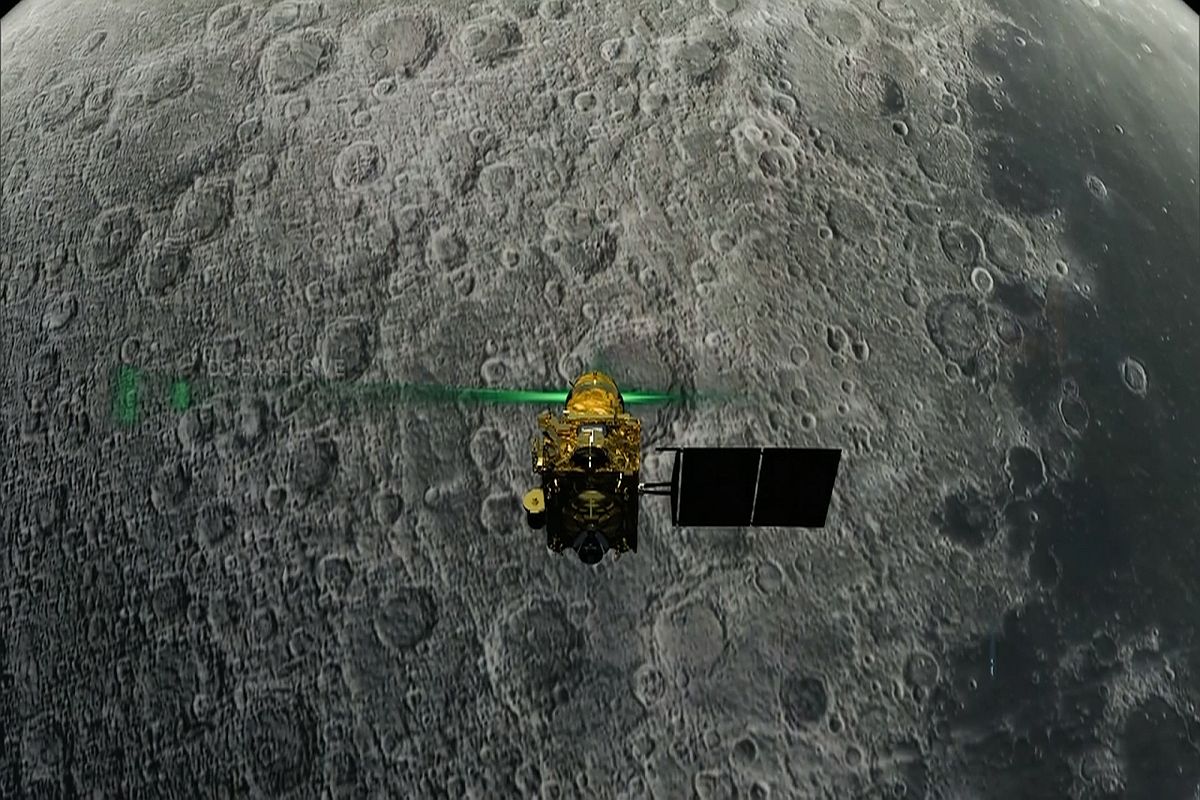Back Home
The recent return of astronauts Butch Wilmore and Sunita Williams from an unexpectedly prolonged mission aboard the International Space Station (ISS) marks yet another milestone in humanity’s evolving relationship with space.
Noting that ISRO scientists have not given up on contacting the lander nearly a month after they lost contact with it in the early hours of September 7, Devereaux said they need to scan the data they got from it till the link snapped.
IANS | New Delhi | October 5, 2019 3:03 pm

Vikram Lander. (File Photo: IANS/ISRO)
The Indian Space Research Organisation (ISRO) has to find the fate of its Chandrayaan-2 lander Vikram on the moon and if “it would be able to talk again”, a US space expert said on Friday.
“It is for the ISRO scientists to find out if Vikram will be able to talk to them or Chandrayaan’s orbiter to restore the link,” said NASA’s Jet Propulsion Laboratory’s spacecraft system engineering manager Ann Devereaux at an event, held to mark the World Space Week of the UN General Assembly.
Advertisement
Noting that ISRO scientists have not given up on contacting the lander nearly a month after they lost contact with it in the early hours of September 7, Devereaux said they need to scan the data they got from it till the link snapped.
Advertisement
ISRO’s Istrac (satellite telemetry, tracking and command network centre lost contact with Vikram when it was descending and was just 2.1 km above the lunar service.
Though the Indian space agency has set up a national committee of experts to find what went wrong with Vikram to lose communication link with it in the last minute, it is yet to confirm its fate on the lunar surface near the South Pole in hostile conditions.
“We don’t really know what happened then and how it (Vikram) hit the moon’s surface and where,” Devereaux said and red flagged the mission’s scale, time and space, which are as good as gone once it falters.
Devereaux, principal engineer for the Mars 2020 lead flight segment, has worked on the Mars Science Laboratory Curiosity Rover project before becoming the lead system engineer for the flight system and fault protection and deputy lead for the entry, descent and landing team.
The UN observes the space week every year from October 4 to 10, coinciding with the launch of the first man-made earth satellite — Sputnik 1 on October 4, 1957 — and the signing of the Outer Space Treaty on October 10, 1967.
JPL is a research facility which is part of the US space agency National Aeronautics and Space Agency (NASA), housed in California Institute of Technology (Caltech) carrying out roboticA space and earth science missions.
Visiting India as part of the US state department’s speakers’ programme, Devereaux has already visited Kolkata, Ahmedabad and New Delhi before Bengaluru to talk about space exploration and other opportunities with teachers, students and start-ups.
Advertisement
President Droupadi Murmu, Prime Minister Narendra Modi among several leaders congratulated the Crew-9 astronauts, including Indian-origin astronaut Sunita Williams, as they safely returned to Earth on Wednesday.
PM Modi said that Space exploration is about pushing the limits of human potential, daring to dream, and having the courage to turn those dreams into reality.
Advertisement
